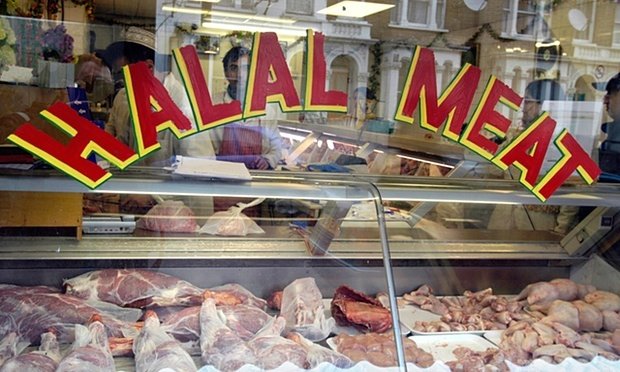
HALAL IS a word of Arabic language which means lawful. It refers to the things or actions permitted by Sharia law without punishment imposed on doer but it has got more practical significance in food industry. Being Muslims, it is our requirement to eat halal food and it has also been stressed heavily in the Holy Quran on consumption of food which fulfills certain criteria to be halal. According to a survey, the global Muslim population is around 1.83 billion which constitutes 30% of the total world population but more than 80% of the world Halal trade is occupied by Non-Muslim countries.
The volume of overall halal products which was USD $ 635 billion in the year 2010, is now estimated to have reached USD $ 2.1 trillion. The global Halal food consumption is about USD $667 billion yearly that is about 16% of the entire global food industry, i.e., Halal meat contributes about 16% of the total world trade. It is interesting to note that India, not a majority Muslim country, is also an active player in the halal food market and its exports have reached USD $23 billion per annum just by properly organizing the industry. Indian Halal meat and meat product exports have grown from USD $1.1 billion in 2009 to USD $4.6 billion in 2014. Worlds leading suppliers for Halal products are Australia, Brazil, Canada, Indonesia, India, Malaysia, Philippines, Thailand, New Zealand and USA. America and Australia are the biggest Halal beef exporters while Brazil and France are the biggest Halal chicken exporters in the Middle East. Thus, at present in many Muslim countries, Halal meat, poultry, dairy products and other foods are predominantly imported from Europe, Australia, New Zealand, and America. The consumers are happy because they are not only getting the Halal but also high quality food.
According to the Euro monitor survey, International global meat consumption reached 225 million tons in 2014, registering about three percent growth over the previous year. In recent years China has become an important player in meat imports due to its growing middle classs appetite for high class food. Chinese meat imports have grown from USD $1.7 billion in 2009 to USD $6.1 billion by 2014. Euro monitor also expects Chinese market meat size to growth 14% over the next five years. It is also noteworthy that Chinese demand for beef and veal has been stronger than its traditional staple meat pork due to rising levels of income in China. Pakistan can and should avail this opportunity that will create huge revenue for the country.
Pakistan ranks 18th in the production index of Halal meat market with an annual output of 2.2 million tons and its share is only 2.9% in the global output which is very low. Pakistan, being an agriculture state, can do more which is evident from the fact that it has more than 169 million heads of quality livestock with 74 million cattle and buffaloes and 95 million sheep and goats. Pakistan is producing 650402 tones chicken meat, 73000 tones buffalo meat, 70600 tones cattle meat, 270000 tones goat meat and 154000 tones sheep meat every year. In the 2.1 trillion US dollar Halal product industry of the world, the meat segment is worth USD $300 billion and Pakistans share in it is only USD $115 million. Meat exporters believe that this figure can be tripled with the right policies.
In Pakistan, it is quite encouraging that nearly all the slaughter houses have either upgraded their plants or they are in the stages of total mechanization and up gradation. It means that this industry now is preparing itself for entering in harsh competition of global Halal meat trade. In Pakistan, a lot of companies have set up state of the art equipment and well trained staff under the guidance of international consultants but the industry is still a long way from reaching those levels. The private sector has been involved in this industry but not aggressively because of issues like taxation, freight rates and energy crisis, etc. The industry needs modern and hygienic slaughter houses that can meet international standards for export of chilled or frozen red meat to the countries where demand for halal meat is growing. Pakistan can be competitive in this trade by strict monitoring of traceability issues and diseases i.e. Foot and Mouth Disease, Cystecircus bovis, Tuberculosis and some other zoonotic diseases etc; proper compliance of HACCP and ISO Certifications systems is required; getting and promoting meat based on world recognized Halal certifications; up-gradation of infrastructure is needed with particular emphasis on value addition; focusing on increased frozen meat demands; proper compliance of environmental certifications; extensive marketing efforts in these international markets by participating in trade fairs
Pakistani meat is perceived as Halal throughout the world and based on unique geographical location our animals have great meat taste. Our country has been blessed with all the seasons and fertile land, thus by taking few steps like Halal logo establishment, concentrating on meat quality and extensive selling techniques, Pakistan can get 100% profit and greater market share.